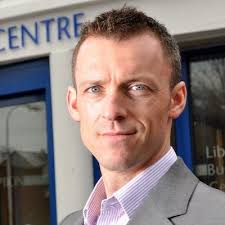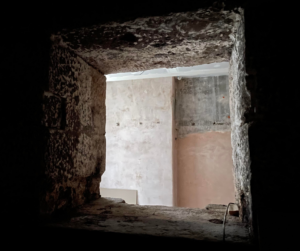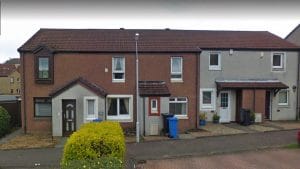First of all, let’s just check what we mean by “price”. The price tag is one thing but what really matters is the actual selling price. There are so many different ways to come at this topic. There’s psychology, market conditions, negotiation, bloody mindedness, greed, fear and all sorts of thoughts and feelings that go into price.
Here I’ll cover some key areas that should give you a knowledge boost. It’s not an exact science but should allow you to work this stuff out quicker. Well, quicker than I did when I started investing in commercial.
What’s the difference between a price tag and the selling price? Well the price tag is what the seller and their sales agent are hoping to get. The selling price is the actual figure they would accept. In times of a strong economy these prices are very close together, but in weaker times there can be a big gap between these figures. Your job is to find out how big the gap is and what the selling price might actually be. In essence, it is done by asking the right questions and carrying out thorough due diligence, which is really just a fancy way of saying research.
It needs to be a mixture of online and offline research. For example, looking at property taxes which, in the UK, are called business rates (or local property tax for our listeners in the States). Also, finding out other property selling prices from agents and local government resources, looking at rental rates and yields of other local properties.
This highlights why it is important to get to know your niche and market, because then you can work things out a lot quicker. Which is why I say getting “in the swim” is so critical so you can build your knowledge. Start small and work your way up. I am not here to tell you all about magical multimillion pound deals or to stoke my own ego, but rather to talk about deals you can do now to get this journey started.
There is of course a different way to approach this. I have had people say, “Jerry I have found an off-market deal. A great property that I think we can do lots with. It’s for sale but isn’t really for sale?” You know, how it goes. “I know a guy that might want to offload a building, but we haven’t discussed the price yet. So where do I start?” In other words a price hasn’t even been discussed.
So, there is nothing wrong with this at all, but it can lull people into a false sense of security where they run around all excited about a potential deal. They enjoy the pursuit and thinking about all the possibilities, but subconsciously they don’t want to know what the asking price is. It might just burst their sweet bubble. Sooner rather than later you need to establish if you are in the same ball park. A simple way to do this is just ask! “What is your client looking for” or if you are dealing directly with the seller, “what is the bottom line number that is going to help move on from this building?”
The following is relevant to both approaches, whether you have a “price tag” or not.
Here are 9 factors that can affect the price:
Defining Value
The whole process needs to be about defining what the value of a building is to you and not the seller. There is no point spending lots of time working out where the selling price is going to be if it’s well over the point where it works for you.
Working out what you can do with the building and the likely income it will produce should at least give you a ball park on what the price needs to be, so it can work for you. These are the key factors to measure opportunities against. For example does it have to produce at least 15% or a 20% return for you? If it can’t, then you can move on.
Yield Rates
Lets remind ourselves of what yield rates are and who determines them. “The net initial yield” is often published in the property particulars or brief. It does of course necessitate there being existing income. Otherwise the yield can only be an “estimate”. To calculate the net yield, you take the net income and divide it by the price tag and multiply it by 100 to get the percentage.
A net 20,000 income on a 400,000 building equates to a 5% yield. Working it back the other way by applying a multiple of 20 to the net income, you will arrive at a price tag of 400,000. This is the kind of yield you would expect to find in a strong market with a great location and strong tenant.
In a secondary town location with steady market conditions and a reasonable tenancy, you might expect a multiple of around 10 or a yield of 10%. Of course, neither of these factor in any borrowing costs.
And a wee lesson here. Be careful. The service costs could outweigh the income. Less open agents may not share that info and you will have to dig into the leases to find the information. I recently had an example where we agreed a price and after reviewing the lease, there was a cap on service charge.
Very shortly we could be entering the best market for premium stock in years. Which could be very interesting for the more passive investor. Let me give you an example. Back in 2008-10 there was a price adjustment almost everywhere and our local city dropped to around £150/square foot. With some off market deals going for as little as £135/ft2. These were for sandstone buildings that were built as grand housing stock 200 years ago. They had servants quarters, grand stairs and ornamental corning throughout. Many had been converted to beautiful office buildings. But when the market picked up, these buildings went up to £200, £225 and £250/ft2. Nothing had changed. Not the tenant type or the building size. Only the market sentiment. Yield rates dropped as prices rose and rose. That is great for a passive investor if you get in at the right point.
So remember, yields are dictated by the market sentiment. The agents try to read those yields and convey it on their marketing literature but they don’t set them. At the end of the day someone will pay what they want to pay and some will sell for the level they are prepared to sell for.
So next time an agent or seller tells you that is the yield rate, remember it is only their perception. Negotiation, pressure points and liquidity are all the real factors that set selling prices. Unless you are truly buying a vanilla product that has lots of comparables, such as an industrial unit in a field of industrial units. But that is not the type of investment we are predominantly talking about here.
Valuation surveyors
These are the guys that go out and carry out an inspection of the property including looking through the details given by you and the seller and measuring the size of the property. They also look for comparables so it is good to find favourable ones beforehand to show them. However, it is worth bearing in mind they really set the borrowing limits but not necessarily the value to you. If everyone you are bidding against is working with bank funding and the surveyor, or surveyors (because sometimes it is the same one), then they may find it hard to bid higher than the limit set by the surveyor, and if it is a pension pot with trustees they will definitely not allow it. I had that once. I had just missed out on a property that I thought would work well for us and then saw another which I subsequently, half-heartedly fired in a bid and thought if you don’t ask you don’t get, right? Well it turned out the other bidders had low valuations and couldn’t bid above the surveyors reported valuation. The pension trustees would not allow it. Valuations of older buildings are always based on the rear view mirror.
Business Rates
These are set by the local council or government department. The figure is usually based on what they think the market rate is. You can use this to provide a benchmark. It’s often a place I start, to get a ball park reading.
The Sellers’ Position
What is their Motivation? Ask questions. For example, what stage of life are they at? Have they run out of steam? Ready for the next project? Or time for the next chapter of investment?
Market Liquidity
Are sales happening quickly or slowly at present? A quick sale might push the gap wider. A fast paced market will push the lines together.
Macro Factor
Some take time to affect and others come over all of a sudden.
- How are other investments performing? Interest rates? Residential investment pains. Is it worth concentrating on getting ahead of the curve?
- Changing Government policy to business, taxes and property landlords.
- Environmental issues, building age and environmental performance.
- Economic cycle and shocks.
- Who is president or prime minister?
Can you get to know the seller?
…and can you get them to know you? Don’t turn up in your flipping range rover! It might give an impression you don’t necessarily want in that moment.
Just Ask
One final thing that needs a number all on its own is, “If you don’t ask you don’t get”. it applies to your bid price and when researching for information.
Of course in reality you can’t work on these things in a linear fashion. You need to be working on lots of different fronts to try and get this moving, ever changing, blurred picture into focus. It doesn’t need to be chaos though. Over the years I have developed a system to help get things into focus much quicker than when I had very limited experience and little idea of where to start. It is one of the things that I see holding people back, but if you can overcome it, then there is less competition on the other side. In a positive way it is actually an effective barrier to entry.
For now, just remember the price tag is one thing but you need to find out where the real sales price is. Work out how the market really is then work out where the seller is. You can then hone into the selling price.
For further information, join our Facebook group to meet others on their commercial property investment journey.
If you are in a hurry then get in touch to see how we can help.






